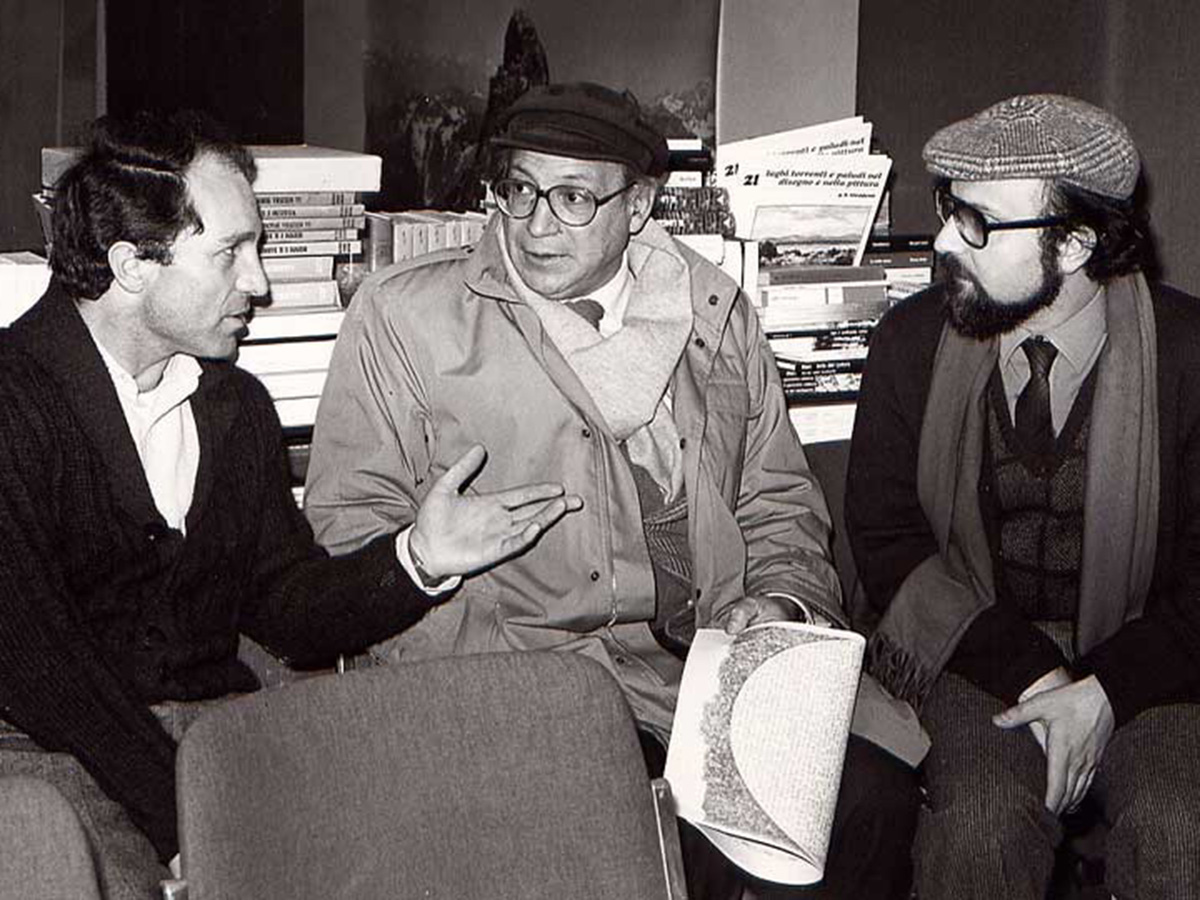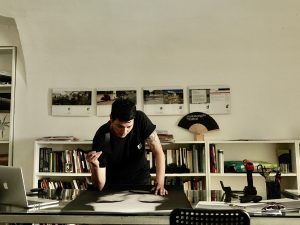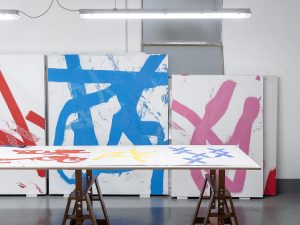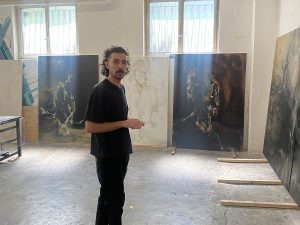In 2002, October — the magazine founded by Rosalind Krauss and Annette Michelson in the mid-1970s with the stated intention of overturning the formalist canon which then still dominated American criticism — chose to celebrate its hundredth issue with a round table discussion with a surprisingly anodyne title. ‘The Present Conditions of Art Criticism’[1] offered an account of a collective reflection that involved some of the leading lights of art criticism and theory across the turn of the century — including, as well as Krauss herself, Benjamin Buchloh, David Joselit and Robert Storr. Re-reading it more than twenty years later, we above all get the impression that the crisis of art criticism — so often mentioned and explained during the discussion — had already by the start of the 2000s exhausted its paradoxical subversive charge. In the 1980s, a liberating euphoria had impertinently and uninhibitedly swept over methods, ideologies, and those ‘grand narratives’ of which Jean-François Lyotard had written in 1979 in his much-quoted and little-read essay The Postmodern Condition: A Report on Knowledge.[2] But by the dawn of the new millennium, this seemed to have been reduced to a sluggish undertow, a resigned linguistic game more disposed to nostalgia than to proposal-making. What dominated in the Octoberists’ discussions was, in short, weariness with a crisis of criticism that seemed, just like analysis, to be interminable and yet, unlike analysis, was unproductive, stuck in a repetition where things little changed. In the opening lines of the round-table discussion, George Baker observed that the cycle of obsolescence of criticism, which had begun in the late 1960s, seemed in turn to be obsolescent. As a way out, he proposed that criticism head into an — also temporal — exile, in the form of a ‘late criticism’ determined to escape the obligation of presentism, but also resisting the lure of lamenting the lost past. ‘No longer or not yet’: this was, according to Baker, the time of art criticism in the early 2000s. And, in fact, as the various theses discussed at the October round table attest — not without their particular nuances — the new century of criticism seemed to be opening up in a rather interlocutory manner, leaving open not-yet defined possibilities, and relying on a proper maintenance of the past rather than a clear vision of the future. What above all dominated the dawn of the 21st century was the shining present of exhibitions, the contagious ‘biennial fever’, the rise — which was only apparently unstoppable, we now know — of the figure of the curator, whom philosophers and critics smugly and somewhat maliciously portrayed as a fatuous and worldly power (a vedette,according to Yves Michaud, one of the fiercest scourges of the curator’s global triumph).[3] Here, we do not wish to enter into the substance of the debate on the curator, which was the subject of voluminous readersand new academic posts (even in Italy, curatorial studieshave become institutionalised, finding space in academies and universities). This debate was surely animated but, in the end, rather steeped in stereotype. But what seems certain is that today it is impossible to reflect on the health of art criticism, on its function and possible efficacy, without taking into account the dynamics of the exhibition system, in which the museum is the leading actor.
That the role of exhibitions, or rather, of exposition, is central in defining the field of art criticism is a fact that today seems entirely taken for granted. And yet, it is worth emphasising, this is a fairly recent assumption: when in 1980 Filiberto Menna published his brilliant (and demanding) essay Critica della critica, in Feltrinelli’s Scritture Letture series, the same one that had hosted texts by Peter Handke and Nanni Balestrini, the question of exhibitions was not even touched upon and Menna’s entire reasoning — feeding on Barthes, on Sontag, on Baudrillard, on Kubler, on Argan and Francastel — was based on the theoretical foundations of criticism. It thus addressed the need for criticism itself to take a self-reflexive attitude, being called upon to corroborate its own status and, at the same time, to assess the ways in which it approaches and keeps its distance from its specific object of investigation. Menna surely did take part in the life of exhibitions, and not only in a passing way (among other things, he was a commissioner at the Tenth Quadriennale in Rome in 1973). In every context and in every autobiography, he asserted his own militant being. Yet this same scholar did not consider it necessary to set his own critical discourse in relation to specific exhibition events, and instead privileged the space of theory and the need for engagement with history and art history. This is a theme that has all too often been skirted around in more recent reflection on criticism and its state of health, which is more concerned with redefining the boundaries — however unstable — between criticism and curatorship or with surveying places and figures already widely recognised in 20th-century criticism and art history. Such was the case of last year’s conference Armi improprie. Lo stato della critica d’arte in Italia.[4] And yet the relationship between criticism, theory and art history is a crucial issue that has provoked sharp controversy in Italy in the past, starting at least from the famous ‘Proposte per una critica d’arte’(1950) with which Longhi sought to begin the journal Paragone. This was a programmatic text that has been taken up and read anew several times in recent years (in 2014 it was published in a volume with a preface by Agamben). From its opening lines, the art historian distanced himself (without naming him) from Lionello Venturi, who with his Storia della critica d’arte had brought art criticism into the realm of ‘philosophical doctrines’, thus separating it from the direct relationship with artworks.[5] It was then that ‘a deployment of two opposing sides was created that extended’ — Giuliano Briganti recalls — ‘from the specific field of art history to the university and consequently to university competitions, publishing, newspaper and magazine columns, and relations with contemporary art … On one side was Lionello Venturi, and on the other Roberto Longhi’.[6] This was a deep faultline that — personal aspects aside — had its deeper causes precisely in the different interpretations of the albeit complex relationship between criticism, theory and art history. Yet this same tangle today no longer seems to arouse great passions.
There are many reasons for this inattention. On the side of history, there has been the questioning of the historicist paradigm, the narrative turnthat has affected all disciplines, the emergence of cultural studies and the consequent multiplication of histories — of art and not only art; and on the side of criticism, there has been the ‘fading of the theorist’[7] diagnosed early on by Angelo Trimarco, one of the most clear-sighted scholars of the transformations (disappearance) of art criticism over the turn of the century. These factors have undoubtedly played a decisive role in chilling interest in the relationship between criticism and art history. Yet the issue has hardly lost its urgency — quite the contrary. Because regardless of the positions one may take on the status of criticism or of art history (at the beginning of the 1980s, Hans Belting suggested ‘the end of art history’),[8] the fact remains that the disciplines that have art, its languages and its meanings as their object, do not draw parallel paths but always exist in dynamic symbiosis. Criticism and art history are, in Breton’s words, communicating vessels: they are mutually implicsated, and we cannot delude ourselves that the decline of one will not also have repercussions on the other.
If the critical act in recent years is more an exercise in style than a judgement (though already at the seminal conference Teorie e pratiche della critica d’arte in 1978, Dorfles questioned whether ‘an axiological judgement is still possible’);[9] if art writing has long seemed to place itself more on the side of communication than on that of interpretation, while theoretical discourse is absorbed entirely by the artwork — this is Arnold Gehlen’s thesis[10] ─ or remains consigned to the pages of essays that often dispense with engaging with current events (Hal Foster has written of the self-isolation of some critics in the rooms of the Academy),[11] then what sources can and will the historian turn to in the future in order to tackle the analysis of a time, our own, which will soon be in the near past but which is already historical anyway? Certainly, like the museum, History is protean. Every time that it seems condemned to ineffectiveness, if not oblivion, it knows how to find new territories to tread and unearth: exhibitions, which have in recent years become the subject of a specific and institutionalised line of art-history study, as well as contemporary art archives, which now have increasingly exposure, have undoubtedly offered new topics and themes to the art historians of the present. However, this is a work of transfer, a strategy of useful annexations that does not strike at the crux of the problem. The issue is that there is no History without criticism and there is no criticism without History. ‘The historical function’, Menna wrote ‘has been and is fundamental in every critical feat, even when it addresses the most immediately contemporary realities. It grasps above all the concrete reality of facts, their vertical and horizontal relations with the context in which they manifest themselves and with the more general context of culture’.[12] In short, constructing history is one of criticism’s jobs, just as at the basis of every archive there is an act of selection, which is a gesture of power and, therefore, of responsibility. The task of recognising values and reconstructing contexts cannot be delegated to those who come after us. Of course, this is not a question of downsizing the functions of art history. Rather, the problem is how to nourish its discourses: highlighting and interpreting partialities and omissions will only be possible if art critics exercise their militant profession. This means constructing theories (which are, as we know, gazes that identify worlds), projecting lights and shadows onto the works, the processes and the dynamics of the art system. And it thus also (and perhaps) above all means observing their own work. As the history of art and criticism has always taught us, this is an effort that cannot be avoided.
[1] Multiple authors, ‘Round Table: The Present Conditions of Art Criticism’, October, Cambridge (MA), The MIT Press, 2002, pp. 200-228.
[2] J.-F. Lyotard, The Postmodern Condition: A Report on Knowledge, Minneapolis, University of Minnesota Press, 1984.
[3] Y. Michaud, L’artiste et les commissaires : quatre essais non pas sur l’art contemporain mais sur ceux qui s’en occupent, Paris, Hachette, 2007.
[4] Armi improprie. Lo stato della critica d’arte in Italia, edited by V. Trione (Milan, 2023). The conference proceedings were published by Johan&Levi, Milano, 2024.
[5] R. Longhi, ‘Proposte per una critica d’arte’, in Paragone, I, 1950, pp. 5-19. This text was republished by Portatori d’acqua, Pesaro, 2014, with a preface by Giorgio Agamben.
[6] G. Briganti, ‘Caro Argan amico e nemico’, in Affinità, edited by L. Laureati, Milano, Archinto, 2007, p. 75.
[7] A. Trimarco, La parabola del teorico. Sull’arte e la critica, Roma, Edizioni Kappa, 1982. An online version with an introduction by S. Zuliani was published by Arshake in 2014: available at https://www.arshake.com/wp-content/uploads/2014/12/Critical-Grounds_A.Trimarco-La-parabola-del-teorico.pdf.
[8] H. Belting, The End of the History of Art?, Chicago, University of Chicago Press, 1987.
[9] G. Dorfles, ‘È ancora possibile un giudizio assiologico?’, in Teorie e pratiche della critica d’arte, Atti del Convegno di Montecatini (1978, Montecatini), edited by E. Mucci and P. Tazzi, Milano, Feltrinelli, 1980, pp. 11-17.
[10] A. Gehlen, Zeit-Bilder. Zur Soziologie und Ästhetik der modernen Malerei, Frankfurt am Main, Vittorio Klostermann, 1986.
[11] H. Foster, The Return of the Real, Cambridge (MA), MIT Press, 1996.
[12] F. Menna, Critica della critica, Milano, Feltrinelli, 1980, pp. 77-78.





